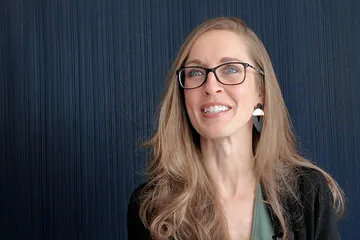As a Senior Interior Designer on our Higher Education Team, Mary LaFrombois has been shaping experiences for student, educators and staff on campuses around the country for over 20 years. In this week's "Wellness in Design" series article, Mary discusses her passion for sustainability and wellness and how she sees the Higher Education industry embracing a health-focused future.
Why did you want to pursue the WELL AP credential?
From the start of my career, I have been passionate about making a positive impact on people through the design of space. One of my college professors taught a course on how space(s) affect people and it deeply rooted the understanding that essentially all elements within a space could alter how people perform. Becoming a LEED AP helped me understand how we as designers could make a positive impact on the environment, but the WELL certification was the missing link for me. Its approach emphasizes the health of people and their environments, allowing us to leverage space to make significant impacts on individuals and their communities. We have the ability to make a positive impact on our client’s spaces and their performance.
What strategies have you used to integrate wellness concepts into student and educator spaces?
Students spend significant time inside campus buildings. Whether in classrooms, student lounges, or their dorms, they are indoors. As designers, we look to WELL concepts to guide how we can make these spaces positively impact students rather than be a determent to their health. One of the biggest impacts we can design is air quality. Natural ventilation and access to natural light helps create great experiences, but air exchanges and filtration are also key. WELL and LEED set minimum standards for these and we often explore with our clients if there are simple, cost-effective ways to exceed these standards.
For educator and staff spaces, we integrate WELL concepts through what we call “free address” spaces in office and learning spaces design. Offering a variety of lounge types and study or impromptu meeting opportunities has always been an important part of creating ideal experiences on campus.




